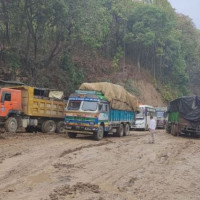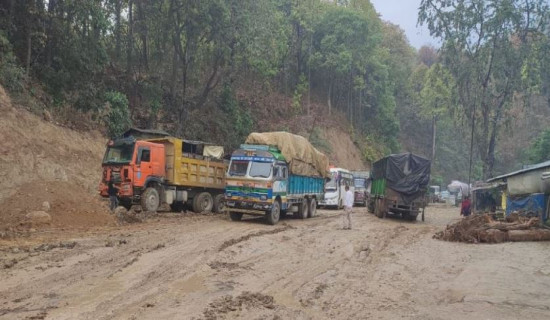- Saturday, 20 September 2025
Protests Choke Nepal’s Skies
It began like any other day at Tribhuvan International Airport (TIA), until protests spilled onto the streets and Nepal’s only international gateway fell eerily silent. Flights were grounded without warning, passengers sat frozen in lounges, and the departure board flickered with the dreaded word delayed. What should have been routine operations turned into chaos as airlines scrambled to reassign slots and reroute aircraft. For a landlocked country, the closure was more than an inconvenience; it was the shutdown of a national lifeline. In those tense hours, Nepal’s reliance on a single airport was laid bare.
Airports do not operate in isolation. They are part of a tightly choreographed global network. When TIA’s runway closed, the disruption rippled far beyond Kathmandu. Airlines lost coveted slots at busy hubs like Delhi, Doha and Dubai, forcing them into a costly scramble for alternatives. Flights diverted to unfamiliar airports, stretching crew schedules and aircraft range. In aviation, minutes matter. Nepal’s paralysis turned minutes into cascading hours of disruption, leaving thousands worldwide in limbo.
Lived ordeal
For passengers, this was not a policy failure but a lived ordeal. Families bound for reunions sat in overcrowded lounges, tourists lost precious days from tight itineraries, and transit travellers missed onward flights. Rebooking meant extra hotel bills and ticket changes, often paid from pockets already stretched thin. Students and migrant workers, many traveling on limited budgets, bore the heaviest burden. Airlines apologised, but apologies did little to ease the helplessness. In those hours, TIA was not just an airport; it was a stark reminder of how fragile ordinary lives are against systemic weakness.
The financial hit spread quickly. Airlines faced extra fuel costs from diversions and staffing headaches as crew duty hours ran over schedule. Ground handlers, taxi operators and caterers lost business, while airport shops and cafés saw their tills dry up. Hotels that should have welcomed inbound guests watched bookings evaporate. Tourism accounts for nearly seven per cent of Nepal’s GDP, and aviation carries more than 80 per cent of foreign visitors. Even a few hours of silence at TIA translates into losses that ripple through the national economy.
More worrying were the safety risks. Diversions meant aircraft were landing at airports not always prepared for sudden traffic, placing extra pressure on air traffic controllers and ground staff. Longer flight times pushed crews closer to their duty-hour limits, raising fatigue concerns. Passengers endured extended journeys with little information. In aviation, predictability is the foundation of safety. When TIA went dark, that foundation cracked, exposing everyone to unnecessary risk.
Airports are more than transit points; they are symbols of reliability. For Nepal, where tourism remains a cornerstone of the economy, the sight of grounded planes projected an image of instability. Airlines already cautious about expanding routes to Kathmandu saw more reasons to hesitate. Investors read it as another sign of weak infrastructure and governance. Tourists will return home not with tales of adventure but of being stranded. In a region competing fiercely for visitors and capital, Nepal’s global image suffered a visible bruise.
The chaos also underscored a long-ignored truth: Nepal’s dangerous dependence on a single international airport. TIA handles nearly all of the country’s 4.5 million annual international passengers, yet there is no effective backup system. Worse, the secondary airports built to share the load were missing in action. Pokhara International Airport, inaugurated in 2023, and Gautam Buddha International Airport in Bhairahawa, opened in 2022, were designed to ease pressure on TIA. Together, they cost Nepal more than 70 billion rupees to build. Yet both remain largely idle.
Pokhara has struggled to attract even regional flights, while Bhairahawa sees only a handful of irregular services. Poor connectivity to Kathmandu, lack of airline incentives and political inertia have left these expensive projects underused. At the very moment Nepal needed them most, they offered no relief. Contingency planning at TIA is equally thin. No clear protocol exists to manage closures or minimise fallout. When one runway dictates the nation’s connectivity, every protest, storm or technical glitch becomes a national crisis. Nepal cannot keep gambling its future on one fragile gateway.
Stronger coordination
The way forward is neither radical nor unknown. Nepal must fully operationalise a second international airport and incentivise airlines to use it. Stronger coordination between aviation authorities, airlines and law enforcement is essential to ensure that public demonstrations do not paralyze vital infrastructure. Most importantly, a crisis-management protocol with clear lines of authority, real-time passenger communication and mandatory care provisions must be institutionalized rather than improvised after the fact.
The closure of TIA was more than a day of delays; it was a blow to Nepal’s credibility. Flights can be rescheduled, and passengers eventually move on, but reputations are harder to rebuild. In a nation where connectivity is survival, allowing a single protest to ground international flights is a failure that resonates far beyond the runway. Unless Nepal addresses these weaknesses, each shutdown will keep its global image grounded, and that is a cost the country can no longer afford.
(Basnet is currently studying MSc in Air Transport Management at the University of Surrey, United Kingdom.)















